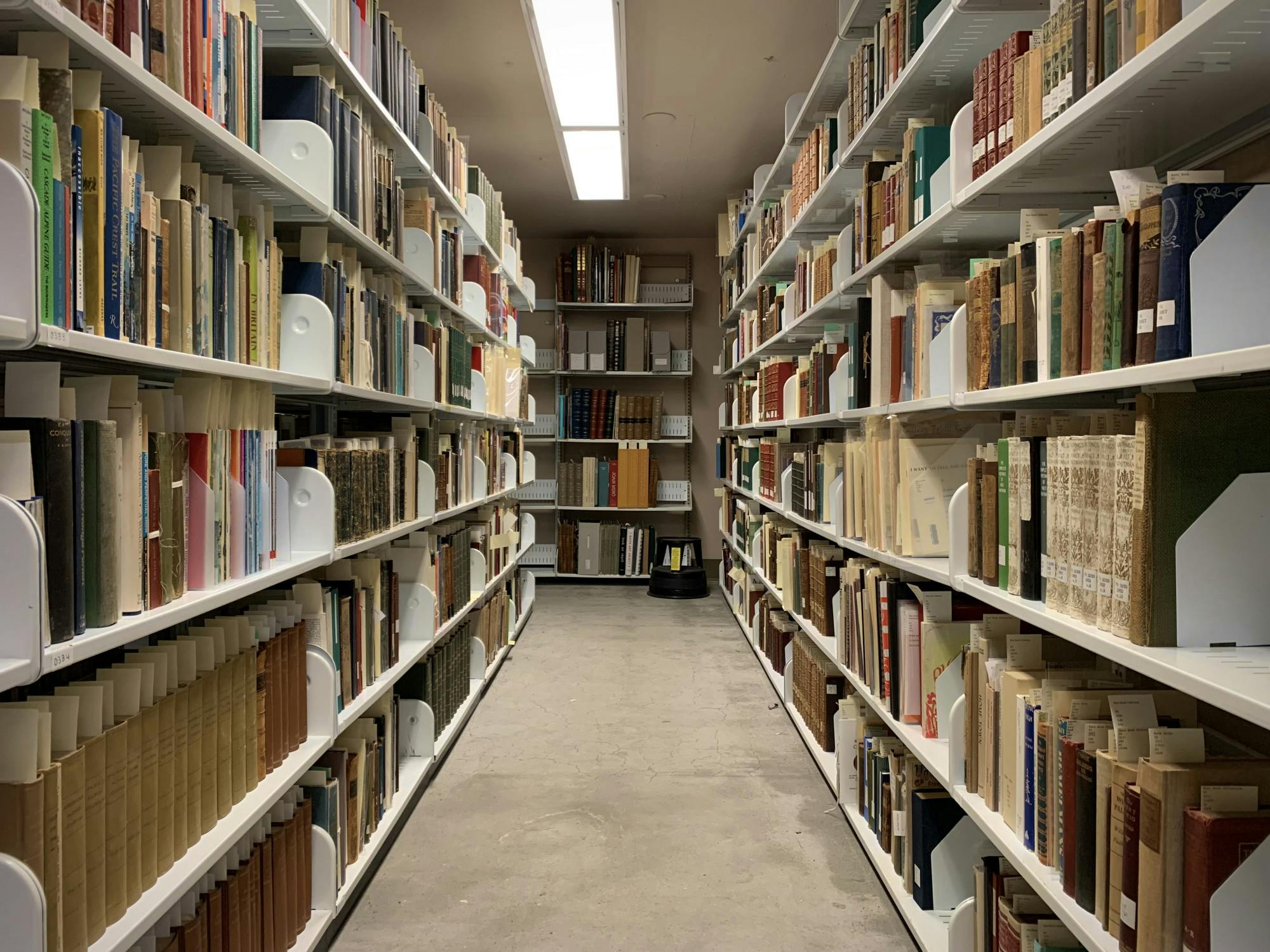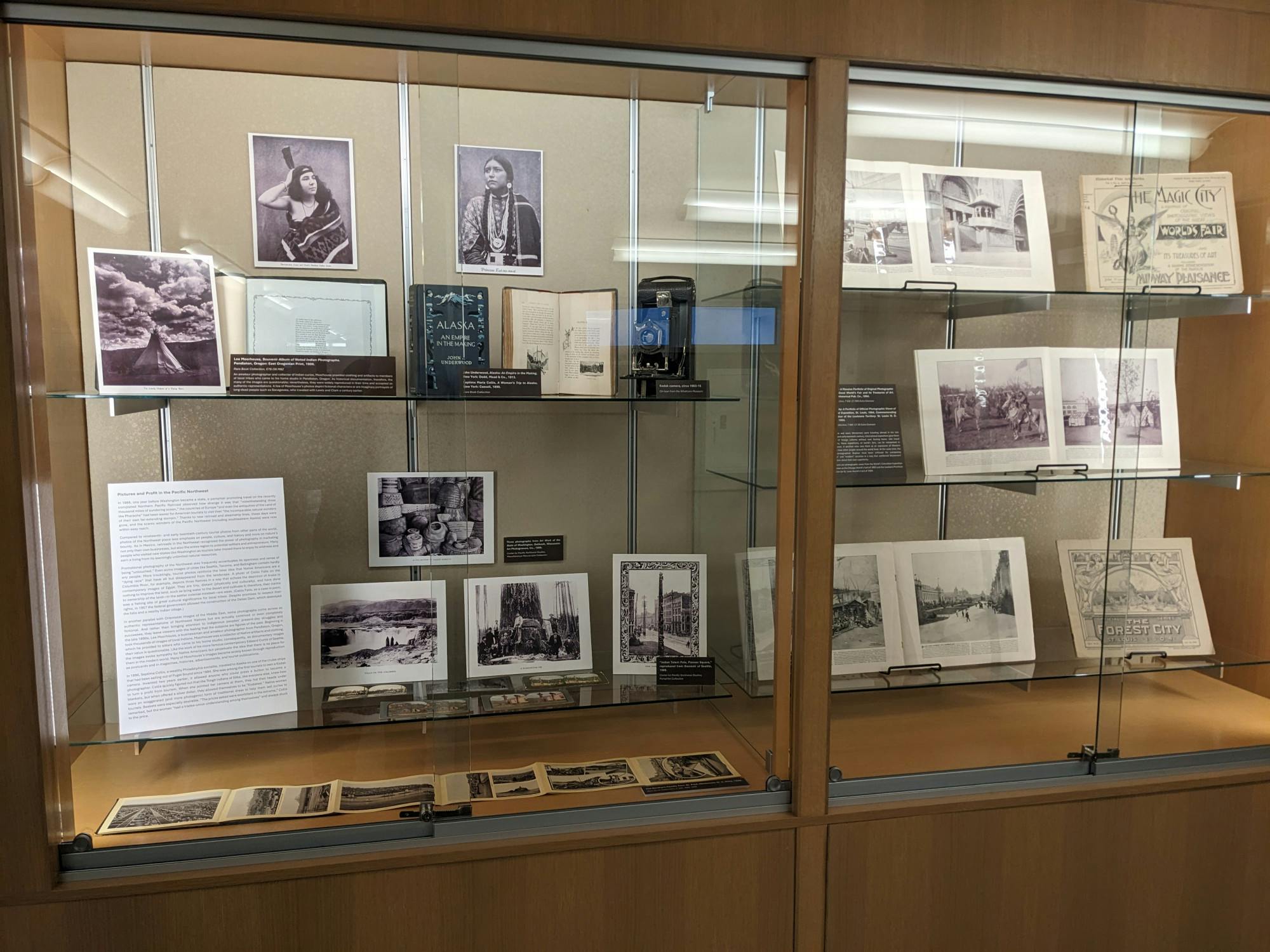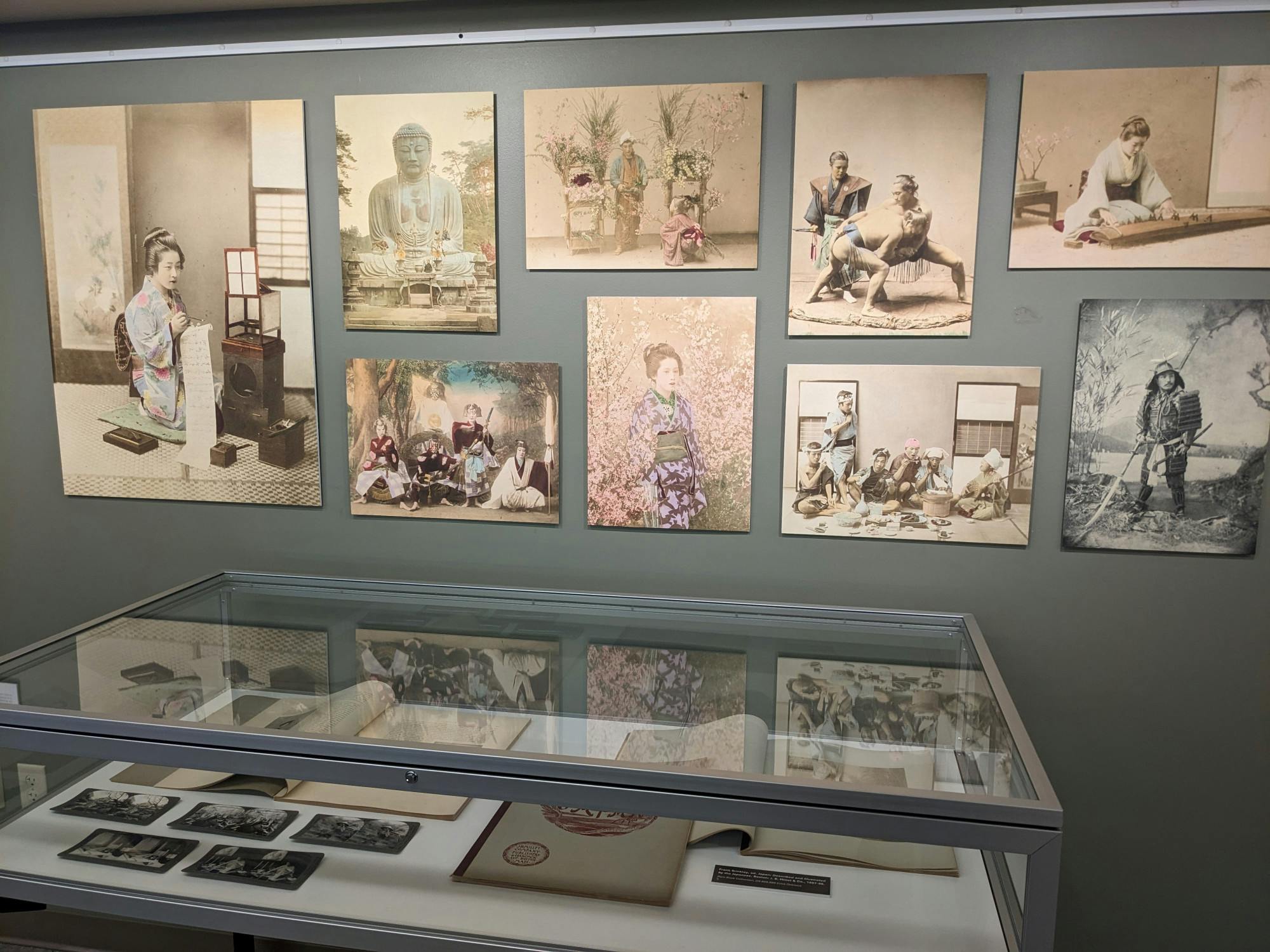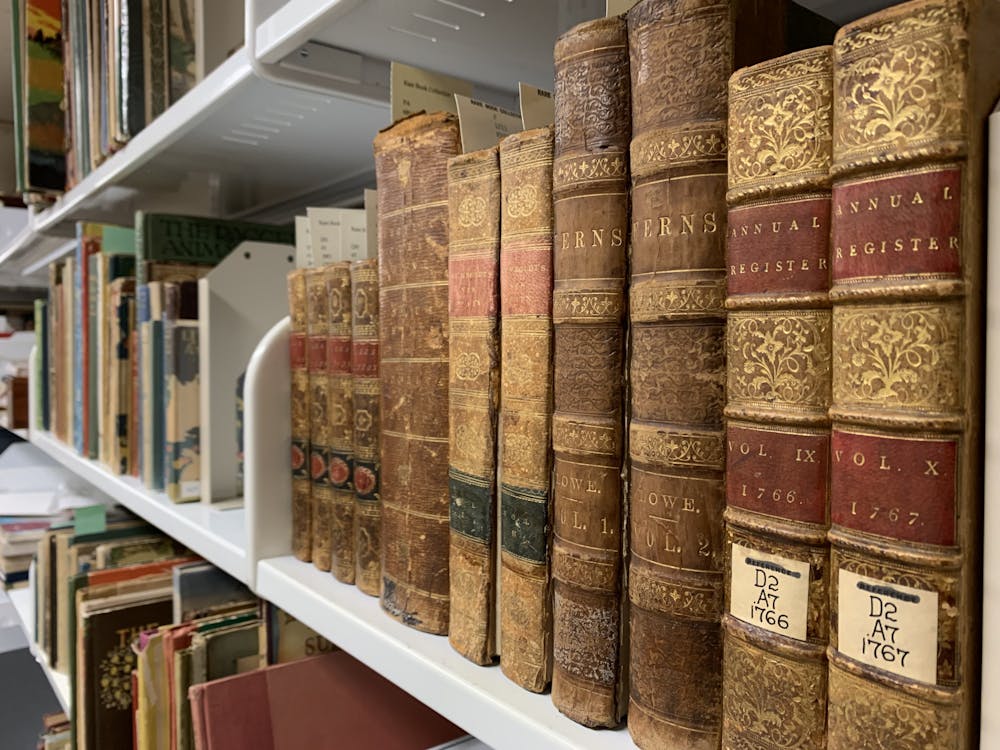Special Collections at Western Washington University Libraries in Bellingham is a gateway into the ancient world. Located on the sixth floor of the Wilson building, this immense archive features medieval texts, photographs, pieces of art and artifacts.
“I like to think of Special Collections as a place where students can travel abroad and back in time, virtually, right at the heart of campus,” said Michael Taylor, the Special Collections librarian. “Our goal is to make sure these materials will be around for a long time to come.”

A look down the aisle in one of the Special Collections shelving rooms, located in Bellingham, Wash., shows the organization of various texts on Jan. 27, 2023. Shelving rooms are separate from the public exhibit, but items can be requested for research and obtained by Special Collections staff. // Photo courtesy of Western Libraries Special Collections
Western instructors from across the university bring their classes to see Special Collections. Students are able to traverse back in time and learn from old artifacts or books in the collection.
“The items in Special Collections inspire students to ask as many questions as the item might answer,” said Gianna Carotenuto, an instructor for Western’s Department of Global Humanities and Religions. “The books, maps, illustrations and photographs act as a voice from another place and time and help the student understand a very different mindset.”
Existing in the presence of such objects grants students the realization that these worlds were real and really not that long ago.
“It's very tactile, and it may bring something that seems like it's just distant history to life,” said Dr. Amy Amendt-Raduege, an instructor for Western’s Department of English who is often referred to as “Dr. Rad” by her students.
“I like to take my medieval literature and culture classes up there to see the medieval texts that we have in person,” Dr. Rad said. “So that they can actually see and sort of touch real medieval manuscripts and get their eyes on, it makes it so real to them."

Special Collections has a public exhibit on the sixth floor of the Wilson building at Western Libraries in Bellingham, Wash. The exhibit features several display cases including this one showcasing old photography equipment and Native American history as shown on Jan. 27, 2023. // Photo by Ben Stainbrook
Historical archives in general remind people of our past and what it means.
“You need documentation, whether it be artifacts, or photographic or written or verbal. Information gives [historical] context,” said Jeff Jewell, a research technician at the Whatcom County Photo Archives. “[History] allows us to have a broader understanding of our place in time.”
For some, history is a grand puzzle that needs solving as it gives meaning to our current existence.
“Once you get the bug for history, it’s like solving a mystery. You can research and investigate and solve mysteries; it’s the detective story. And people love mysteries right?” Jewell said. “[The] legacy element is probably the most important thing that museums, history and the photo archives have to offer is that you're satisfying that human need for meaning.”

Japanese history is presented as one of several displays in the public exhibit in Western Libraries Special Collections. Art pieces and photographs hang above a display case containing Japanese books as shown on Jan. 27, 2023. // Photo by Ben Stainbrook
Special Collections is meant to be an open resource for students to locate their interests, whether it be in the current time or in the past.
“Students and professors also use materials from Special Collections to do original research,” Taylor said. “If you are looking for primary sources, we are one of the best places on campus to visit.”
Museums, archives and collections like these are what define history as we know it. They close the distance between what is considered the past and what is considered the present.
“The passage of time isn’t automatically history,” Jewell said. “History is the documentation of the passage of time.”
Ben Stainbrook (he/him) is a campus news reporter for the The Front during the 2022-2023 winter quarter at Western. He is a second-year student and is planning to major in visual journalism. Away from reporting, he enjoys taking photographs, playing games and making music.
You can message him @benstainbrook.thefront@gmail.com






